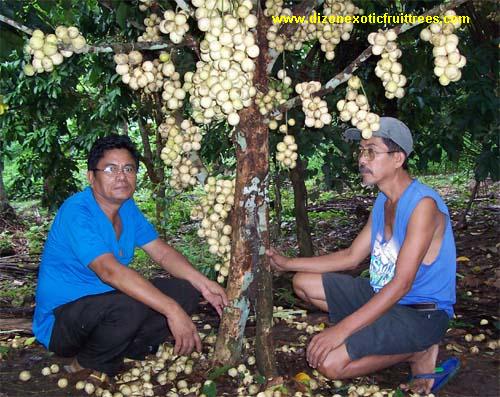|
|
|
The Philippine Star, Agriculture,
Sunday, June 6, 2004 |
|
The promise
of multiple rootstock technology |
|
Editor Roman
F. Floresca |
|
|
|
 |
The root system is the basic foundation of plants.
The roots function as anchorage and the lateral
roots with root hairs absorb water and nutrients as
well as, oxygen for respiration. Multiple rootstock
or multi-root system is the growing of plants with
two or more rootstocks as shown in the accompanying
picture. Fruit-exporting countries - Taiwan,
Thailand and Australia - are practicing this
technique.
This superior
technology has many advantages over the usual single
rootstock system. |
| A
double rootstocked lanzones tree heavy with
off-season fruits that could command higher price is
flanked by Bernie Dizon (left) and Eddie Rubio
(right) |
|
|
|
Growth and development are
accelerated making the tree more prolific as it overcomes
the biennial (alternate) fruiting habit. Production can be
enhanced by 300 percent.
Fruit trees like mango produces heavy fruiting only
after every year and if forced to bear fruits by applying
KNO3, the tree will have a short life span as what happened
in Cebu, Zambales, Nueva Ecija and Pangasinan.
Better root anchorage enables the tree to resist strong
winds and other adverse conditions. Moreover, more root
system essential in taking in nutrients from fertilizers
minimize fertilizer losses to evaporation and leaching.
Gestation period (fruiting) of the young trees is
shortened by one half of the normal waiting time.
Physiological maturity is also enhanced. A five-year old
triple rootstock tree is comparable to an 8 to 10 year old
fruit-bearing tree. As the tree will bear fruit early,
producing off-season quality fruits will command higher
prices. The tree becomes non-seasonal due to its reinforced
nature.
Faster propagation or reproduction of desired variety
with lesser mortality, more uniform growth and longer life
span can be achieved, thereby, enhancing and prolonging
productivity.
|
|
|

